Apps Zone

Battery Charging Animation App
The Evolution and Significance of Interactive Charging Screens
In the rapidly evolving world of mobile technology, subtle details like interactive charging screens have grown from mere aesthetic enhancements to functional tools that shape user interaction and engagement. Historically, charging screens were static and uninspiring, often displaying a simple battery icon that incrementally filled as the device stored energy. However, with advances in display technology, graphical processing units, and software design paradigms, there emerged a compelling opportunity to transform this otherwise mundane interaction into a vibrant user experience that not only informs but also entertains and personalizes. Interactive charging screens leverage dynamic visual animations and effects that respond to the state of the battery and the environment, thus creating a layered feedback mechanism. For example, neon effects might pulsate in sync with power flow, or heart-shaped animations could glow to communicate charging speed or battery health, transforming a routine moment into a sensory engagement. The interplay between hardware capacity and software synergy becomes critical in delivering these effects efficiently. Developers must optimize the animations to minimize unnecessary CPU and GPU usage, preventing excessive battery drain or device overheating while still achieving smoothness and visual richness. Techniques such as hardware-accelerated rendering, vector animations, and adaptive frame rates are typically employed to strike this balance. From a theoretical standpoint, interactive charging screens can be analyzed through the lens of human-computer interaction (HCI) principles, especially the concepts of feedback and visibility. By providing real-time, visually rich feedback during charging, users are reassured about their device’s status, which in turn can reduce anxiety related to connectivity and battery health, fostering trust and prolonged device usability. Furthermore, innovation in customization has introduced a new layer where users are empowered to select themes or animations that resonate with their personality or mood. Thus, the charging screen transcends its utilitarian roots, becoming a canvas for self-expression. The implications extend beyond individual devices, as these animations open possibilities for branding and marketing within device ecosystems. Smart charging animations could subtly display promotional content or tips, thereby opening new channels for communication between manufacturers and users. This fusion of function, form, and interaction underscores why contemporary charging animations are more than digital art—they represent a confluence of software engineering, user experience design, and behavioral psychology, mastering how simple screen interactions can amplify device engagement and satisfaction.
Technical Foundations Behind Dynamic Charging Animations
Behind every captivating interactive charging screen lies an intricate technical infrastructure rooted in modern graphics frameworks, sensor integration, and real-time system monitoring. At its core, dynamic charging animations rely upon the interplay between device API triggers that detect the charging state and graphics rendering engines capable of producing fluid animations without taxing system resources. Typically, when a charger is connected, the operating system dispatches a system event that third-party applications or built-in widgets can hook into, signaling the commencement of the charging process. This event acts as the trigger to initiate animation playback sequences that may vary based on predefined user preferences or optimization conditions. The graphic engine may employ vector graphics to render scalable elements that maintain clarity regardless of screen resolution, significantly enhancing visual quality on modern high-density displays. Unlike raster graphics, vector-based animations offer compact file sizes and smooth transformations, enabling developers to create vivid neon trails, glowing effects, or morphing shapes with higher performance efficiency. Multithreading is often exploited to decouple animation rendering from the main UI thread, ensuring that the device’s responsiveness remains intact throughout the charging animation sequence. Moreover, advanced frameworks utilize GPU compute shaders and OpenGL ES or Vulkan APIs to maximize hardware acceleration, resulting in 3D-like animations and lighting effects that were once exclusive to high-end games or desktop applications. Sensor fusion techniques also contribute technically by incorporating ambient light sensors or proximity detectors. This data can dynamically alter animation brightness or intensity, ensuring the visual output adapts to environmental lighting to both prevent visual fatigue and conserve display power. Additionally, battery state APIs provide granular information such as current charge percentage, temperature, and voltage, enabling animations to reflect these variables contextually—for example, warmer colors might signify rapid charging or temperature rises. From a software architecture perspective, these charging animations are often implemented as modular components or widgets that can be layered over the lock screen or home screen with minimal interference. Through defined interfaces, they interact with system battery manager services, leveraging hooks to update animations in real time with the battery’s progress. This requires careful resource management and adherence to platform guidelines to avoid security risks or excessive resource consumption. The development of such charging screen widgets mandates a deep understanding of cross-compatibility issues across diverse Android versions or manufacturer customizations, demanding robust error handling and performance profiling. Furthermore, the integration of user-configurable options necessitates clever state management to persist preferences, often involving the use of shared preferences or lightweight local databases. Lastly, the existence of charge completion alarms built into these systems enhances practical usability, alerting users to disconnect the charger and optimize battery longevity—an example of how technical sophistication in animations can be combined with functional utility to improve overall device health management.
Design Principles and Aesthetics Driving User Engagement
The allure of interactive charging screens is deeply rooted in meticulously crafted design principles that fuse aesthetics with functionality to elevate user engagement beyond passive observation. At the foundation lies color theory, which dictates how hues, contrasts, and gradients create visceral emotional responses. The use of neon effects harnesses vibrant, glowing colors against darker backgrounds to maximize contrast and focus, effectively capturing the user’s attention the instant charging begins. This choice is informed by studies in visual salience and emotional impact, where luminous colors evoke sensations of energy and vitality, seamlessly aligning with the concept of battery rejuvenation. Beyond color, the animation style—be it smooth morphing, pulsating heart shapes, or dynamic circular progress indicators—adheres to the principle of motion design. Motion design leverages timing, easing curves, and trajectory paths to construct an animation rhythm that is both captivating and soothing. For example, a heart animation expanding and contracting in a steady rhythm can mimic natural breathing patterns, instilling a calming effect while subtly signaling charging stability. Importantly, the designs are modular and categorized, allowing users to select themes based on their preferences or situation—for casual, playful, or more professional presentations. This customization aligns with the theory of personalization in user experience (UX), which suggests that personalization increases user satisfaction, perceived value, and emotional attachment to the device. User interface (UI) design balances the dynamic art with information clarity—charge percentage indicators must remain legible and prominent against vivid backgrounds. Designers apply layers, opacity techniques, and spatial positioning to ensure essential data is unmistakable, providing a harmonious marriage between form and function. Usability heuristics govern the interface's responsiveness and predictability, preventing overwhelming or distracting visuals that could detract from practical use. Accessibility is also a crucial design concern, with considerations such as color blindness palettes or adjustable animation speeds, ensuring inclusivity so that diverse user groups experience equitable benefits. The use of playful, funny designs signals another dimension where gamification and lightheartedness can improve user perception. By transforming a routine charging process into a moment of visual entertainment, these designs reduce frustration related to power anxieties and can encourage healthier charging habits. The interplay between 2D and 3D design elements pushes creative boundaries, where certain themes employ pseudo-3D effects using shading, gradients, and parallax to heighten immersion. The underlying narrative of these animations often embodies energy flow metaphors, representing electricity transfer visually and symbolically, fostering a deeper, almost tangible connection between the user and the device's inner workings. Through these layered design strategies, interactive charging screens evolve into an engaging, informative, and customizable experience that marries technical sophistication with artistic expression, significantly enhancing how users interact with their smartphones during charging.
Practical Applications and User Benefits of Enhanced Charging Screens
Interactive charging screens with stunning effects provide far more than an aesthetic upgrade—they deliver tangible, practical benefits that enrich the user experience while influencing battery maintenance behaviors and device longevity. One principal advantage lies in the immediacy of feedback communicated during the charging process. Instead of glancing at an unresponsive static icon, users receive dynamic, real-time visual cues correlating directly to battery status. For example, an increasing glow intensity or shifting colors may indicate acceleration in charging speed, alerting users to the presence or absence of fast-charging capabilities and helping to manage their usage accordingly. From a behavioral perspective, this nuanced feedback encourages better power management habits; users are more likely to consciously unplug their devices sooner when supported by satisfying notifications, such as animated completion alarms integrated into the charging screen experience. This can prevent overcharging and mitigate battery degradation over time, an essential consideration particularly with lithium-ion chemistry that benefits from regulated charging cycles. Additionally, these interactive screens serve an informative function for device diagnosis. Some advanced animations incorporate temperature warnings or charging anomalies visually embedded in the animation theme, signaling to the user without needing technical expertise that charging conditions may be suboptimal. This proactive awareness can spur timely action, such as switching chargers or seeking device servicing, potentially avoiding hardware damage or unsafe conditions. Convenience is markedly enhanced by integrating charging animations with widgets that display battery levels with clarity and precision. This persistent, aesthetically pleasing presentation reduces the need to unlock the device or navigate multiple menus merely to check battery status, streamlining interactions especially in use cases where hands-free or glanceable info is beneficial. For workflow continuity, themed animations that change based on battery thresholds or charging speed help users anticipate device readiness and coordinate their charging with activity schedules. Moreover, these experiences engender emotional connections with devices, increasing user satisfaction and perceived value. In the competitive smartphone market, such human-centered design elements differentiate products and foster brand loyalty. The integration of charge completion alarms with the visual experience adds a functional notification layer that blends sensory engagement with timely alerts, reducing electricity wastage by pointing out when charging is done. This can have positive environmental implications and optimize energy use in daily life. Furthermore, customization options amplify accessibility and personalization, where users can tailor animations to mood, occasion, or even specific needs such as low-light operation modes. This personalization extends to various demographics, allowing applications to cater broadly across different cultural aesthetics or user preferences, enhancing universal engagement. From an enterprise or educational context, dynamic charging screens can be leveraged as communication platforms, where subtle branding or instructional animations appear during charging periods, merging utility with informative messaging. Overall, these practical applications coalesce into a multifaceted toolkit enhancing device interaction quality, supporting battery health, providing informative feedback, and boosting user enjoyment—making advanced charging animations a pivotal feature in modern smartphone ecosystems.
Exploring the Charging Animation Battery Widget & Wallpaper App
The Charging Animation Battery Widget & Wallpaper app represents a culmination of the principles, techniques, and benefits discussed, embodying a highly functional platform designed to revolutionize the charging experience on Android devices. At its core, this app introduces a diverse library of interactive charging animations categorized by style—ranging from neon glows vibrant with electrifying hues, to charming heart animations evoking warmth and connectivity, as well as humorous designs injecting levity into the charging routine. Each category is engineered to provide unique visual feedback, crafted through optimized graphics frameworks ensuring fluidity across a wide spectrum of hardware configurations. The app integrates tightly with the device’s power management system, detecting charger connection events and automatically triggering animations layered seamlessly atop the lock or home screen without interrupting user workflow. The inclusion of a charge completion alarm stands out, enabling users to receive an immediate, adjustable notification when the battery reaches full capacity, thereby promoting responsible charging habits that conserve battery life and energy. This feature is especially beneficial for those prone to leaving devices plugged in unnecessarily, addressing a common pain point in mobile device maintenance. A distinct strength of the app lies in its user-centric customization, offering intuitive controls to select animation themes, adjust playback speed, and toggle display settings to accommodate ambient lighting or personal preference. Such granular control extends to widget configuration, allowing the battery level indicator to be placed freely and visually styled to merge cohesively with chosen wallpapers, ensuring the entire charging interface feels bespoke rather than generic. Technically, the app employs low-level animation optimization techniques such as GPU acceleration and smart frame rate capping to minimize CPU load, thereby preserving overall system performance and limiting undue power consumption during animations, which is crucial for maintaining battery efficiency during charging cycles. This balance between visual impact and resource management reflects deep engineering insight. Furthermore, the app’s architecture supports scalability and future feature integration, with modular animation modules designed for easy updates adding new themes or sensor-driven adaptability. While currently available exclusively on Android platforms, its design demonstrates clear potential for cross-platform expansion, enhancing the charging paradigm universally. From a practical perspective, the app fundamentally changes mundane charging moments into opportunities for engagement and information, encapsulating a synergy between decoration and functionality rarely seen in utility-focused applications. Users are empowered not only to beautify their device but also to harness real-time battery data, facilitating smarter device management and an enriched user experience. With a promise to refresh the charging interface continuously, the app exemplifies how thoughtful software innovation can transform simple processes into dynamic, enjoyable rituals. For those ready to elevate their phone’s charging experience with electrifying animations and high customization, Download for Android serves as the gateway to this vibrant ecosystem, offering an instantly accessible, richly featured solution that goes beyond traditional charging screens into an interactive, animated future.
Share Your Opinion
Your Email Will Not Be Published.
All Rights Reserved © Apps Zone 2025

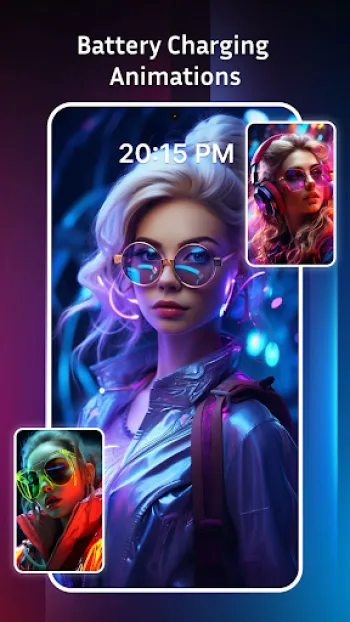

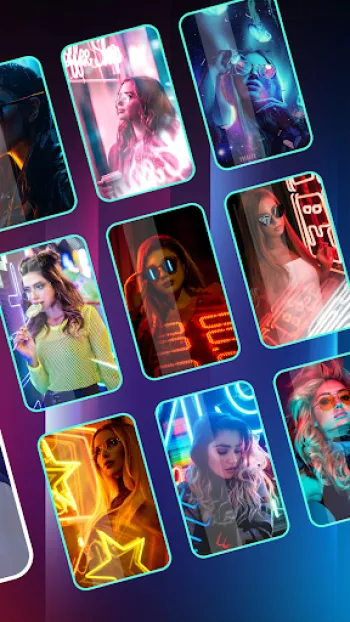
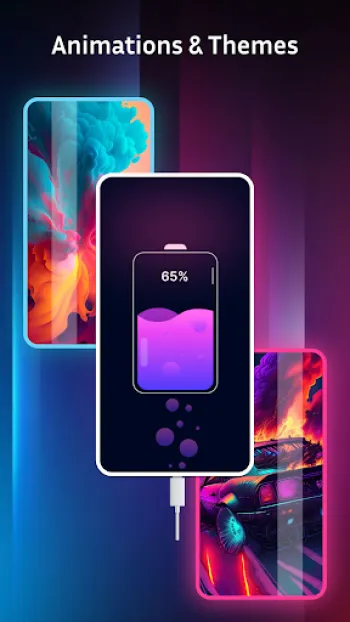

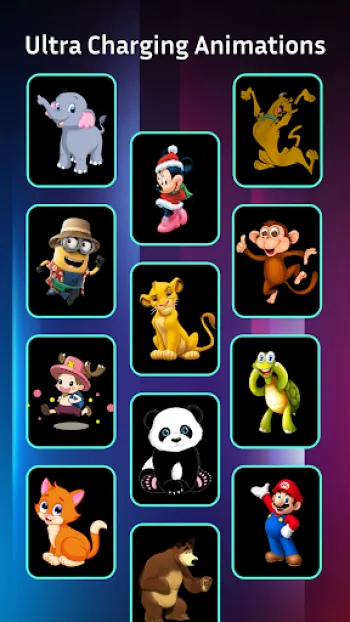



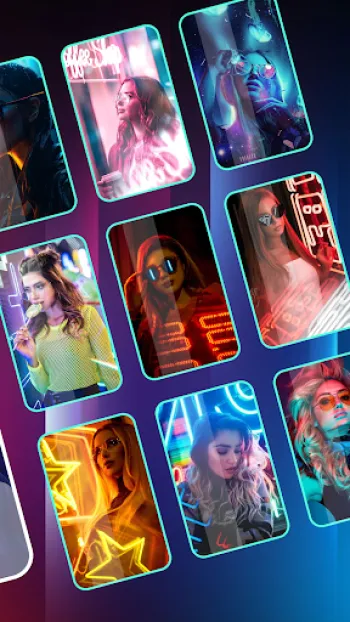








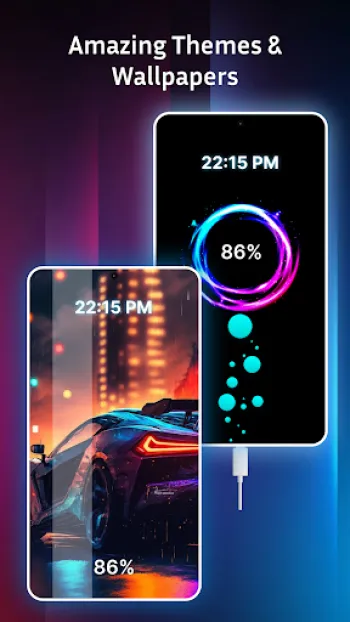














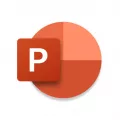










HARSH CHAUDHARY
I genuinely enjoy watching my battery charge now because of this app. The animations are playful, innovative, and visually captivating, turning a b...
Adarsh Sharma
It is a very nice app There are a lot of animations and easy to use also good for anime lovers🇮🇳
Apeksha Tambe
I've been using this app since a month and it's really great full it gave a aesthetic look to your phone while charging🇮🇳
Abhay Pratap phogat
Every time I plug in my phone, I look forward to seeing the unique animations. It’s amazing how something so small can make a big difference in the...
pranab debnath
This app is fantastic for personalizing your phone! Battery Charging Animation offers a great selection of cool and vibrant animations that make th...